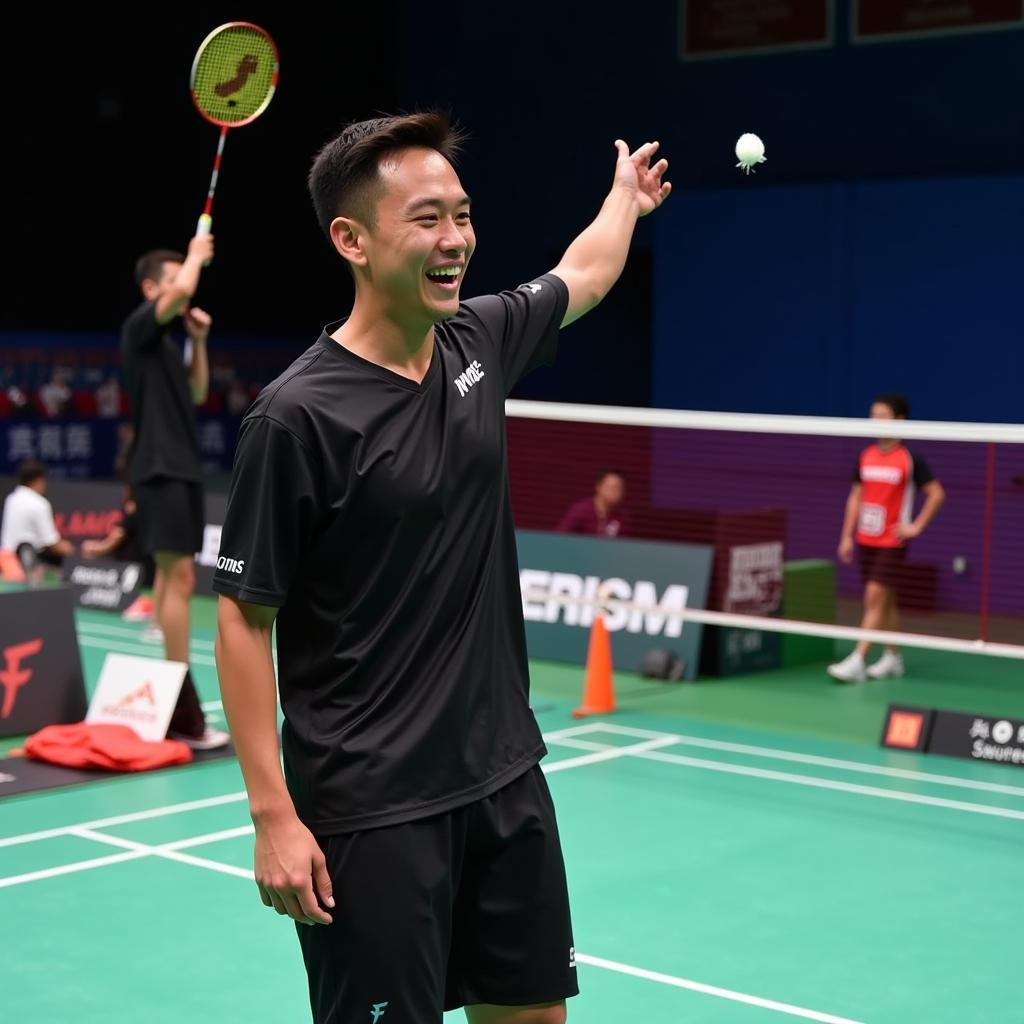Mastering Defensive Techniques in Badminton
October 23, 2024Badminton, often perceived as a game of swift attacks and powerful smashes, hinges equally on a strong defense. While offensive plays might steal the show, a solid defense can be the deciding factor in a match. It’s the bedrock upon which you build rallies, anticipate your opponent’s moves, and ultimately, dictate the pace of the game.
 Badminton player defending a smash
Badminton player defending a smash
The Importance of Footwork in Defense
Just like a fortress needs strong walls, effective defense in badminton relies heavily on agile footwork. Quick and precise movement allows you to cover the court efficiently, reach those tricky shots, and return them with precision.
- Agility is key: Badminton is a fast-paced sport, and your ability to move swiftly in any direction is paramount. Focus on drills that enhance your lateral movement, short bursts of speed, and changes in direction.
- Court Coverage: Understand the geometry of the court. Knowing where to position yourself based on your opponent’s shot and anticipating their next move will give you a significant advantage.
- Footwork Drills: Incorporate footwork drills into your training routine. Shadow drills, court sprints, and multi-directional cone drills are excellent ways to improve agility and court coverage.
Mastering the Defensive Shots
Defense isn’t just about retrieving shots; it’s about returning them strategically. Mastering various defensive shots will equip you to counter your opponent’s attacks and turn the tables in your favor.
- High Clear: A classic defensive shot, the high clear buys you time to recover and regain your court position. Aim for a high and deep shot towards your opponent’s baseline.
- Lift: Similar to the high clear, the lift is used to create distance and time. However, the lift is hit with more power and a flatter trajectory.
- Drop Shot: A well-placed drop shot can catch your opponent off guard. It requires finesse and touch, aiming for a soft landing just over the net.
- Net Shots: When close to the net, master the art of net shots. These soft, delicate shots require precision and can be used to force a weak return from your opponent.
 Badminton players exchanging shots
Badminton players exchanging shots
Reading Your Opponent: The Key to Anticipation
A good defender isn’t reactive; they’re proactive. Anticipating your opponent’s shots is crucial for setting up your defense and launching counter-attacks.
- Observe Body Language: Pay close attention to your opponent’s stance, grip, and body movements. These cues often reveal their intended shot.
- Analyze Patterns: As you play, take note of your opponent’s shot preferences and patterns. Do they favor smashes from a particular position? Do they tend to use drop shots when caught off-balance? Recognizing these patterns will give you a significant edge.
- Mental Preparation: Visualization techniques can enhance anticipation. Before a match, visualize different scenarios and practice your reactions in your mind. This mental rehearsal will sharpen your responses during the game.
The Mental Game: Staying Calm Under Pressure
Defense is as much a mental battle as a physical one. Staying calm and focused under pressure is essential for making quick decisions and executing your defensive shots effectively.
- Focus on the Present: Dwelling on past mistakes or worrying about the score will only hinder your performance. Focus on the current rally and the shot at hand.
- Develop a Positive Mindset: Believe in your abilities and maintain a positive attitude, even when facing challenging situations.
- Practice Mindfulness: Incorporate mindfulness exercises into your routine to enhance focus and manage stress. Techniques like deep breathing can help you stay grounded and composed during intense rallies.
 Badminton player celebrating a point
Badminton player celebrating a point
Mastering defensive techniques in badminton is an ongoing journey. Consistent practice, combined with a strategic mindset and unwavering focus, will undoubtedly elevate your defensive prowess and transform you into a formidable opponent on the court. Remember, a strong defense is not passive; it’s an opportunity to outmaneuver your opponent, control the rally, and ultimately, secure victory.